TLDR Sunlight exposure ages hair, making it brittle, stiff, and dry.
The document discussed how photoaggravation contributed to hair aging by causing chemical and physical changes in hair fibers, such as increased porosity, loss of mechanical strength, and surface roughness. These changes were due to lipid oxidation, disulfide bond cleavage, tryptophan degradation, and cysteic acid formation. Sunlight exposure made hair more brittle, stiffer, and drier, with reduced water absorption. Hair pigments protected hair proteins by absorbing radiation and dissipating it as heat, but this led to pigment degradation. Dark hair was more resistant to photodegradation than light hair due to the higher photostability of eumelanin. Ultraviolet and visible light degraded hair's integral lipids, weakening the cell membrane complex.
30 citations
,
November 2005 in “The journal of investigative dermatology. Symposium proceedings/The Journal of investigative dermatology symposium proceedings” The lipid in human hair follicles acts as a barrier, similar to the skin's lipid layer.
 99 citations
,
June 2005 in “Journal of Cosmetic Dermatology”
99 citations
,
June 2005 in “Journal of Cosmetic Dermatology” Hair ages due to genetics and environmental factors, leading to graying and thinning, with treatments available for some conditions.
7 citations
,
September 2004 in “International Journal of Cosmetic Science” Blond hair lightens more with visible light directly, while ultraviolet light lightens it after washing by damaging other hair parts.
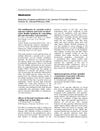 22 citations
,
July 2004 in “International Journal of Cosmetic Science”
22 citations
,
July 2004 in “International Journal of Cosmetic Science” UV radiation and visible light can damage hair, but there are ways to protect it.
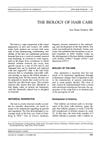 41 citations
,
October 2000 in “Dermatologic clinics”
41 citations
,
October 2000 in “Dermatologic clinics” Better hair care products are needed to protect against grooming and chemical damage.
40 citations
,
April 1999 in “Journal of Histochemistry & Cytochemistry” S100A3 protein is mainly found in specific parts of human hair cells.
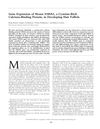 40 citations
,
November 1998 in “The journal of investigative dermatology/Journal of investigative dermatology”
40 citations
,
November 1998 in “The journal of investigative dermatology/Journal of investigative dermatology” S100A3 protein is crucial for hair shaft formation in mice.
18 citations
,
January 1994 in “Skin pharmacology and physiology” Sunlight damages hair, causing cuticle loss, protein changes, and discoloration.
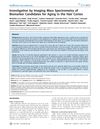 21 citations
,
October 2011 in “PloS one”
21 citations
,
October 2011 in “PloS one” Certain molecules in hair change with age and could be used for cosmetic treatments.
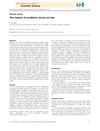 59 citations
,
November 2015 in “International Journal of Cosmetic Science”
59 citations
,
November 2015 in “International Journal of Cosmetic Science” Oxidative stress damages hair and contributes to aging, and managing it can help maintain hair health.
 77 citations
,
July 2020 in “Journal of the European Academy of Dermatology and Venereology”
77 citations
,
July 2020 in “Journal of the European Academy of Dermatology and Venereology” Environmental factors, hormones, nutrition, and stress all significantly affect skin health and aging.
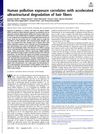 23 citations
,
August 2019 in “Proceedings of the National Academy of Sciences of the United States of America”
23 citations
,
August 2019 in “Proceedings of the National Academy of Sciences of the United States of America” Pollution exposure speeds up hair damage.
 June 2025 in “Current Issues in Molecular Biology”
June 2025 in “Current Issues in Molecular Biology” Minoxidil, caffeine, and biotin can improve hair shine by restoring certain genes.








